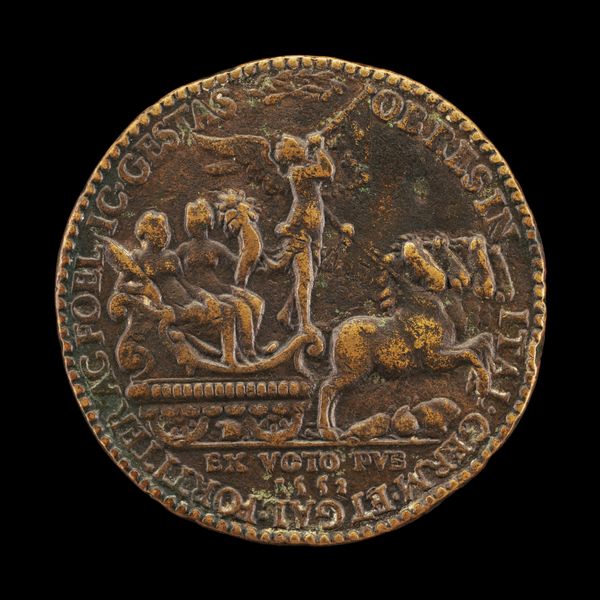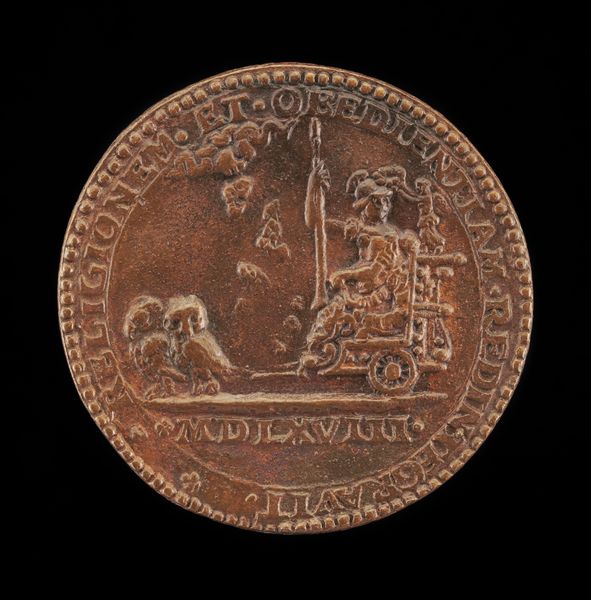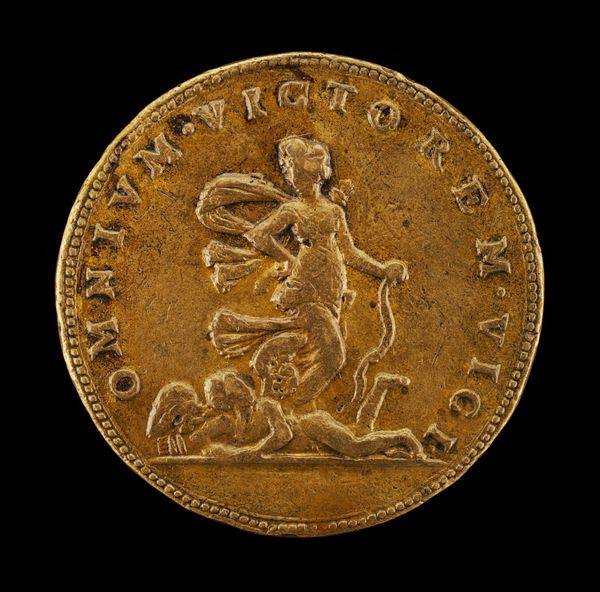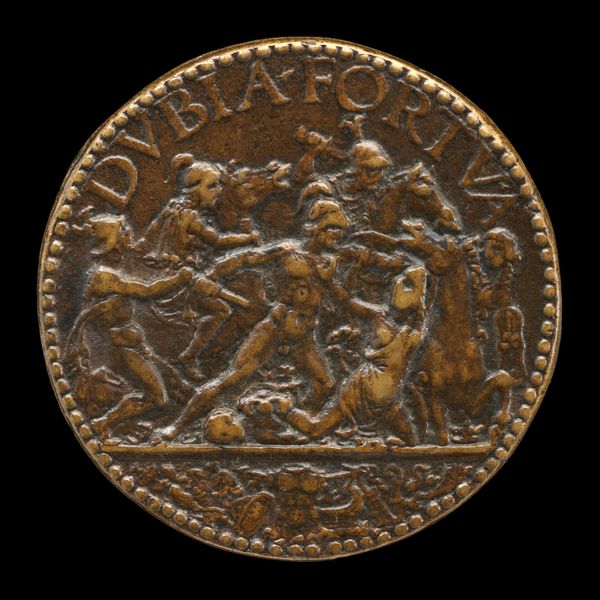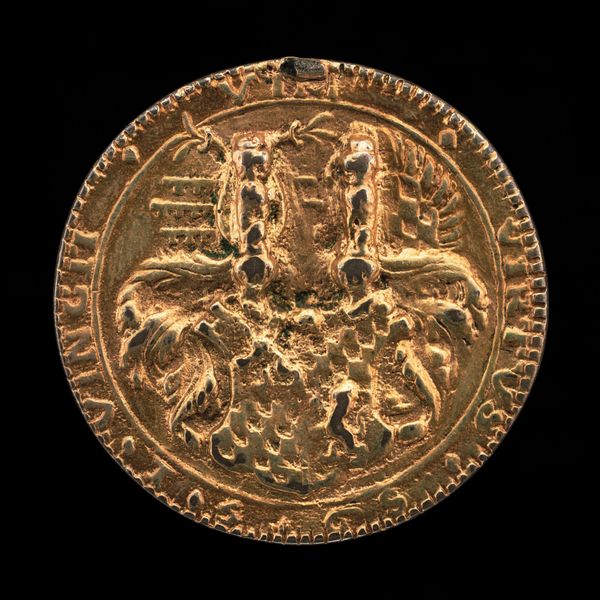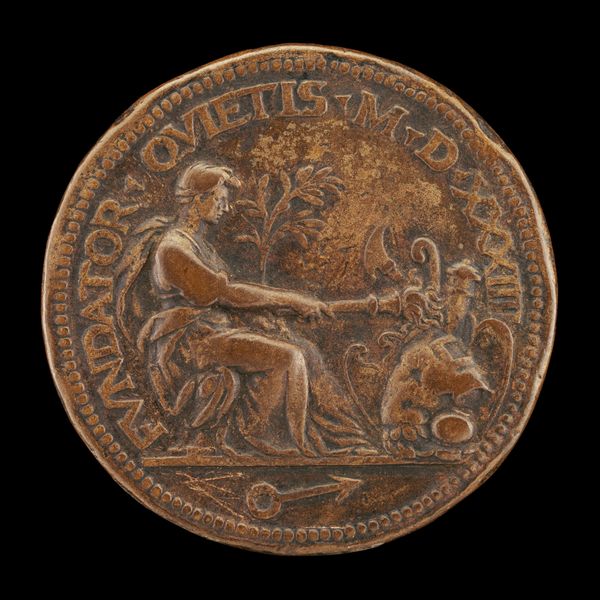![Fame, Abundance, Victory [reverse] by Etienne Delaune](/_next/image?url=https%3A%2F%2Fd2w8kbdekdi1gv.cloudfront.net%2FeyJidWNrZXQiOiAiYXJ0ZXJhLWltYWdlcy1idWNrZXQiLCAia2V5IjogImFydHdvcmtzLzNjNDNhNmY4LWEyMWMtNDMyZS05OWZjLTI5ZDhkNTU3Y2ZjZi8zYzQzYTZmOC1hMjFjLTQzMmUtOTlmYy0yOWQ4ZDU1N2NmY2ZfZnVsbC5qcGciLCAiZWRpdHMiOiB7InJlc2l6ZSI6IHsid2lkdGgiOiAxOTIwLCAiaGVpZ2h0IjogMTkyMCwgImZpdCI6ICJpbnNpZGUifX19&w=3840&q=75)
metal, relief, bronze, sculpture
#
portrait
#
medal
#
metal
#
relief
#
bronze
#
ancient-mediterranean
#
sculpture
#
miniature
Dimensions: overall (diameter): 5.21 cm (2 1/16 in.) gross weight: 53.06 gr (0.117 lb.) axis: 12:00
Copyright: National Gallery of Art: CC0 1.0
This bronze medallion, "Fame, Abundance, Victory," was made by Etienne Delaune in the 16th century using the *cire-perdue*, or lost wax casting method. First, a wax model would have been carefully sculpted, then encased in plaster. After the plaster hardened, the wax was melted out, leaving a cavity. Molten bronze was poured in, and once cool, the plaster investment was broken away, revealing the finished medallion. The material itself is crucial here. Bronze, a mixture of copper and tin, allowed for intricate detail, seen in the figures and lettering. But it also signified wealth and status; bronze casting was a laborious process, requiring skilled artisans, specialized workshops, and access to raw materials. The medallion shows the influence of the Renaissance on decorative arts, as well as the skilled traditions of bronze casting, alongside that of fine arts. Consider the labor involved, from mining the ore to the final polishing. This medallion isn't just a celebration of fame, abundance and victory, it’s a testament to the material and human resources required to produce such an object. By appreciating its materiality and the processes involved, we recognize the true value and complexity of this artwork.
Comments
No comments
Be the first to comment and join the conversation on the ultimate creative platform.
